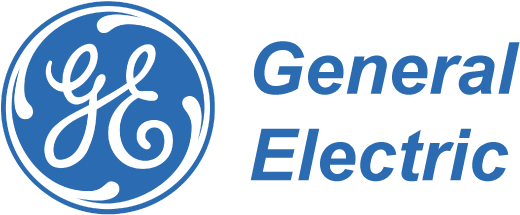The rapidly evolving sphere of electrical products is an astonishing wonder of the modern age. One can hardly imagine a world without them, yet it’s a reality that our ancestors lived in just a few generations ago. Today, from morning coffee rituals to late-night screen scrolling, electrical products shape our everyday lives. But have you ever wondered how many jobs are available in electrical products?
According to the Bureau of Labor Statistics, there are over 350,000 jobs available in electrical products, in the United States.
It’s a question we often overlook as we plug in our devices, turn on our TVs, or switch on a lamp. However, the answer is much more extensive than you might expect, spanning various fields and disciplines. As you read through this article, we’ll shed light on the sheer volume of job opportunities existing within the intricate tapestry of the electrical products industry.
What are Electrical Products?
Electrical products encompass an impressive array of items that are an integral part of our day-to-day lives. From the everyday objects like televisions, refrigerators, and mobile phones to specialized equipment like transformers, electric motors, and circuit breakers – all of these are classified under electrical products. These items are designed and manufactured by electrical engineers and technicians, powered by electricity, and are built to make our lives more convenient and productive.


Is Electrical Products a Good Career Path?
The short answer? Absolutely. The electrical products sector is a dynamic and evolving industry, always on the cutting edge of technological advancements. A career in electrical products is not just rewarding in terms of personal fulfillment, but it can also provide financial stability. The industry presents vast opportunities for career growth and development, especially for those passionate about innovation and technology.
With the growing emphasis on renewable energy and efficient power consumption, professionals in the electrical products industry are more vital than ever. Moreover, the digital revolution has resulted in an ever-increasing demand for advanced electrical products, further solidifying the sector’s stability and potential for growth.


Best Paying Jobs in Electrical Products
Electrical Engineer
An Electrical Engineer is at the heart of the electrical products industry. These skilled professionals design, develop, and test a wide variety of electrical equipment. Whether they’re working on large-scale power systems or innovative household appliances, their expertise is critical. Notably, their expansive role is reflected in their income. As of 2023, the average annual salary for an Electrical Engineer in the United States is approximately $98,000.
Power Systems Engineer
Transitioning to the power sector, we find the role of a Power Systems Engineer. These individuals shoulder the responsibility of designing and developing systems that generate, distribute, and control power. In the era of renewable energy and sustainable practices, their role has gained even more prominence. They work relentlessly behind the scenes to ensure the power that lights up our homes and powers our industries is reliable and efficient. Reflective of their crucial role, the average annual salary for a Power Systems Engineer is around $105,000.


Electronics Engineer
Next we have Electronics Engineers. Their domain extends to designing and developing electronic equipment. This could range from cutting-edge communication systems to the newest portable music device. If it has intricate circuits and delivers innovative functionality, an Electronics Engineer was likely a part of its creation. Given the diversity and importance of their role, an Electronics Engineer can expect an average annual salary of about $102,000.
Control Systems Engineer
Moving further into the intricate world of electrical products, we encounter the role of a Control Systems Engineer. These talented individuals are tasked with designing, developing, and implementing systems that control and monitor various processes within an industrial setting. Their work optimizes efficiency, ensuring that production lines operate smoothly and without hiccups. A Control Systems Engineer’s contribution to the efficient running of electrical systems is well rewarded, with an average annual salary of approximately $95,000.


RF (Radio Frequency) Engineer
In the realm of wireless communication and broadcast systems, the RF Engineer reigns supreme. Their expertise lies in designing, implementing, and maintaining systems that rely on radio frequency technology. This includes everything from your favorite radio station to the critical telecommunication systems used in various industries. With the pervasive reliance on wireless communication in our modern world, it’s no surprise that RF Engineers command an impressive average annual salary of approximately $102,000.
Firmware Engineer
Our final stop on this tour of the best paying jobs in the electrical products industry is the role of a Firmware Engineer. These professionals operate at the crossroads of hardware and software, developing the low-level code that drives electrical products. From your digital thermostat to the latest gaming console, a Firmware Engineer played a crucial role in bringing these products to life. Their highly specialized skills set them apart, earning them an average annual salary of around $110,000.


These best paying positions underscore the potential of the electrical products industry. With continuous technological advancements and an unyielding drive for innovation, these roles don’t just offer an attractive paycheck but also a fulfilling career for those with a passion for electrical products.
3 Largest Electrical Products Companies in the US
General Electric (GE)
Stepping into the spotlight first is General Electric, or GE, as it is commonly known. This multinational giant was born out of the inventive mind of Thomas Edison in the late 19th century. Today, GE has its hand in various sectors, ranging from aviation and power to healthcare and renewable energy.


General Electric’s innovative spirit is perhaps best illustrated by its annual commitment to research and development. In recent years, it has invested billions into perfecting its products and exploring new frontiers. GE’s enduring presence on the Fortune 500 list further testifies to its success, strength, and stability in the market.
Eaton Corporation
Next on our journey is Eaton Corporation, a powerhouse in the domain of power management. With over a hundred years of operation under its belt, Eaton’s expertise is beyond question. The company is known for its wide spectrum of energy-saving solutions, managing everything from electrical to hydraulic and mechanical power. Eaton’s commitment to environmental sustainability shines through their trailblazing work in developing power-efficient technologies.


Eaton’s influence isn’t confined within a few borders. Rather, its products and services have made their way to over 175 nations around the globe. With an annual revenue nearing the $20 billion mark, it’s clear that Eaton has etched a prominent spot for itself within the electrical products industry.
Emerson Electric Co.
Our final destination is Emerson Electric Co., a formidable player on the global technology and engineering stage. Emerson takes pride in crafting novel solutions that cater to a broad customer base, spanning industrial, commercial, and residential sectors. The company’s product line is impressively varied, featuring everything from sophisticated automation systems to advanced climate technologies.


Since its establishment in 1890, Emerson has been on a relentless path of growth and progress. Nowadays, their reach extends across more than 200 countries, where they provide engineering solutions designed to tackle the globe’s most pressing challenges. Garnering an annual revenue that surpasses $17 billion, Emerson’s operations are undeniably vast, underscoring their critical role within the electrical products industry.
Each of these companies showcases the breadth and depth of the US electrical products sector. Their vast operations, continued success, and commitment to innovation highlight the exciting opportunities in this dynamic industry.
Frequently Asked Questions (FAQ)
What is the count of electrical engineers?
Exact global figures regarding the population of electrical engineers are tough to pin down due to differing data sets and categorizations. According to data gathered up until September 2021 from the Bureau of Labor Statistics, the United States was home to approximately 330,000 professionals in this field. Expectations suggest that these numbers have grown over time. Nonetheless, it’s crucial to bear in mind that these numbers are prone to considerable variation across different years and regions.
How many electrical engineers find employment every year?
The annual recruitment of electrical engineers isn’t a constant figure – it can rise and fall based on multiple elements like economic climates, technological progress, and the needs of the industry. As per the Bureau of Labor Statistics in 2021, the projected growth rate for electrical and electronics engineers between 2019 and 2029 was around 3%. This suggests the creation of several thousand job opportunities every year. Nevertheless, these figures can alter as industries transform and new employment sectors come into existence.
Is there a shortfall of electrical engineers?
The debate surrounding the potential scarcity of electrical engineers is multifaceted. Some studies suggest that the number of job vacancies surpasses the number of eligible electrical engineers, which hints at a probable shortage. Still, this depends on factors such as the geographic area, specific industrial requirements, and the unique skills needed. More pronounced shortages might be present in specialized electrical engineering domains like power systems or semiconductor technology. Also, this scenario can vary over time, adjusting to changes in technology, economy, and education.
What are the key areas of electrical engineering?
Although electrical engineering is a wide-ranging and multifaceted field, it can be primarily divided into three key areas:
Power and Energy Systems:
This encompasses the creation, transmission, and distribution of electric power. It touches on areas like renewable energy sources, grid administration, and the crafting and progression of power electronic devices.
Electronics and Microelectronics:
This area is centered around the crafting and progression of electronic devices, circuits, and systems. It covers elements like semiconductor devices, integrated circuits, and systems designed for signal processing and communication.
Communications and Signal Processing:
This focuses on the transmission, processing, and understanding of information signals, covering fields like telecommunications, wireless communication, and applications of data science.
Each of these broad categories houses several more specific subfields and specializations. As technological progress continues, the face of electrical engineering also continues to evolve.
Conclusion
In conclusion, the electrical products industry offers a myriad of opportunities, a dynamic field teeming with possibilities. As our reliance on electrical products continues to grow, so too will the job market within this sector. It’s an exciting time to become part of this energetic industry – a career path charged with potential. So, why not switch gears and explore what the world of electrical products has to offer?
In this sea of job opportunities, there could be the perfect role waiting just for you. We hope this article has illuminated the potential that this vibrant industry holds. After all, the future is electric!

